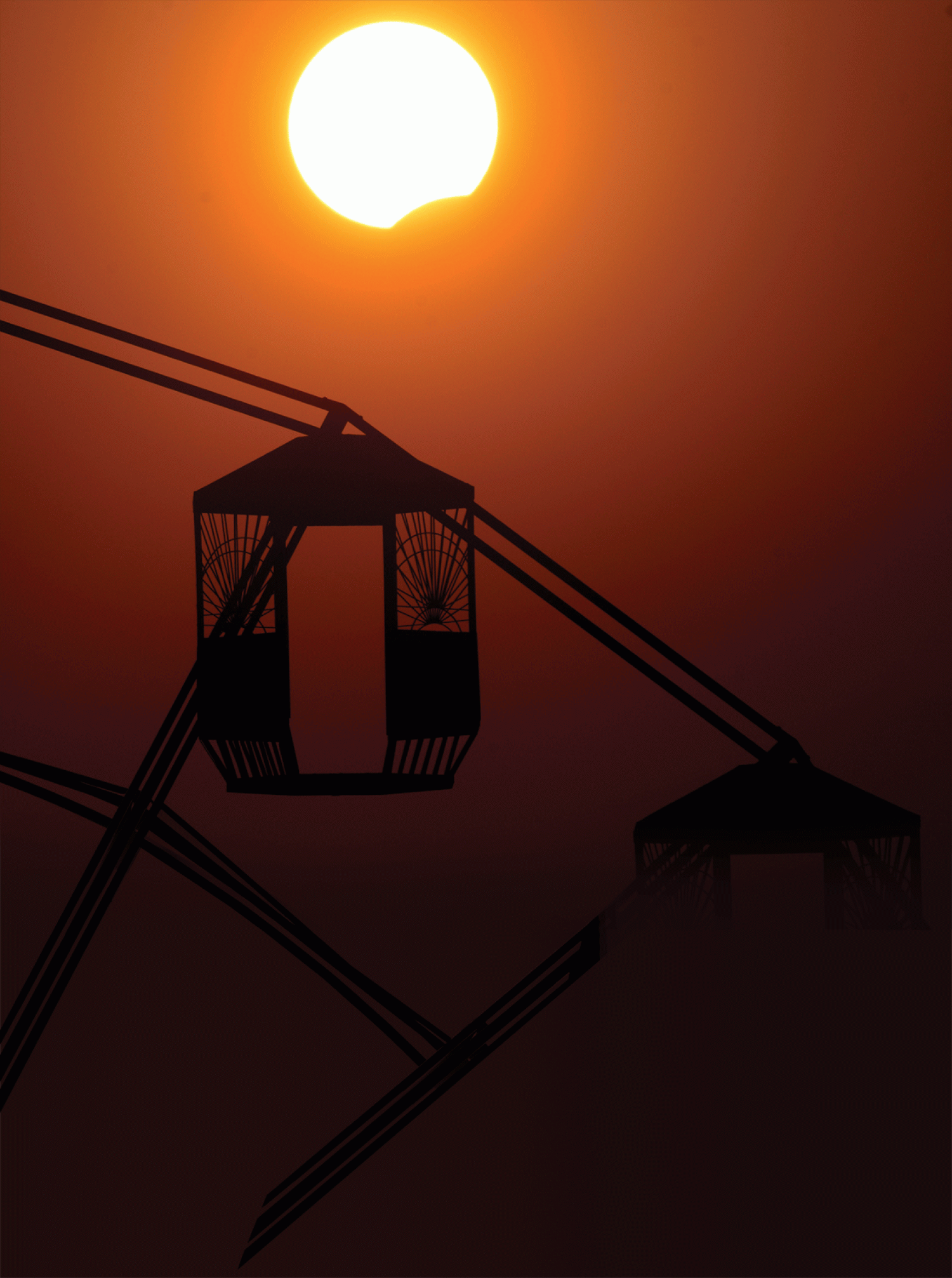
American Eclipse

CU astronomer Doug Duncan has some advice about this summer's total eclipse: Don't miss it.
Strange things happen when the moon eclipses the sun.
Once, while chasing a total solar eclipse by boat in the Galapagos, CU astronomer Douglas Duncan found himself surrounded by surfacing whales and dolphins.
“It was clear they knew something weird was happening,” said the professor, who’s witnessed 10 total eclipses in spots around the world. “They watched the eclipse and then went away.”
Another time, in Bolivia, he saw a herd of llamas stop to observe an eclipse for three full minutes.
Duncan, who is the outgoing director of CU’s Fiske Planetarium, can appreciate these reactions: When the earth, moon and sun perfectly align, he said, the sky “looks like a black hole into the heavens” surrounded by pink flames.
“People scream, applaud and cry,” he said. “It gets cold and all of the colors of the landscape start to change. It’s like you’re in a dream.”
This year, it will be easier for Americans to experience a total solar eclipse than it’s been in decades. On Aug. 21, 2017, the sun will be obscured completely for roughly 2-minute bursts across a 70-mile-wide strip from Oregon to South Carolina. The last total eclipse over the contiguous U.S. happened in 1979.
At around 10:15 a.m. PDT on Aug. 21, residents of Salem, Ore., will be among the first in the U.S. to see the phenomenon. About 90 minutes later, residents of Charleston, S.C., will be among the last. In all, a total eclipse will be visible in 12 states.
People in every state will see a partial eclipse, according to Duncan, who’s studied the sun and stars for more than four decades. But getting into the total eclipse’s direct path, he said, is worth the extra effort.
“No one who has seen a total eclipse has ever forgotten it,” he said. “It’s the most amazing natural thing you’ll ever see in the sky.”
A total eclipse is visible somewhere on Earth every year or two, but rarely so close to home. Americans are preparing to take advantage of the opportunity: Hundreds of public viewing events are scheduled at parks, libraries, museums, breweries and town centers around the country.
Duncan himself will lead 275 people to Jackson Hole, Wyo., where the party will watch the eclipse at Grand Teton National Park at 11:34 a.m. MST. He chose the location four years ago after determining the area is likely to have clear weather. (Two total eclipses he’s witnessed have been clouded out.)
Other prime viewing locations include Madras, Ore.; St. Joseph, Mo.; and Nashville, Tenn., according to greatamericaneclipse.com. The eclipse will be seen longest near Carbondale, Ill. — for 2 minutes, 40 seconds.
Anyone observing a total solar eclipse should use a pair of certified solar filters, known as “eclipse glasses,” or a handheld solar viewer — easily purchased online — to block the sun’s visible and ultraviolet rays. Sunglasses, binoculars and cameras generally do not offer comparable protection.
“The sun is powerful enough to burn paper when concentrated by a lens,” said Duncan. “That would happen in your eye if you stared at it unprotected.”
Astronomy educator Cherilynn Morrow (PhDAstro’88) of Boulder has seen three total solar eclipses, including one during a trip to the Mediterranean Sea led by Duncan. She plans to watch this year ’s eclipse with friends and colleagues in Oregon.
“At the moment of totality,” she said of her first experience, in Baja in 1991, “I felt as if I were suddenly immersed in a surreal twilight, a s if the sun had just set in all directions at once…in the middle of the day!”
Duncan, who retires from Fiske this summer to focus on teaching at CU and producing videos for NASA, is already looking beyond August’s eclipse: In July 2019, he’ll be on a ship racing to see another just off Tahiti.
For more information, visit eclipse2017.nasa.gov/events and colorado.edu/eclipse.
Photo ©PRAKASH MATHEMA/Getty Images

